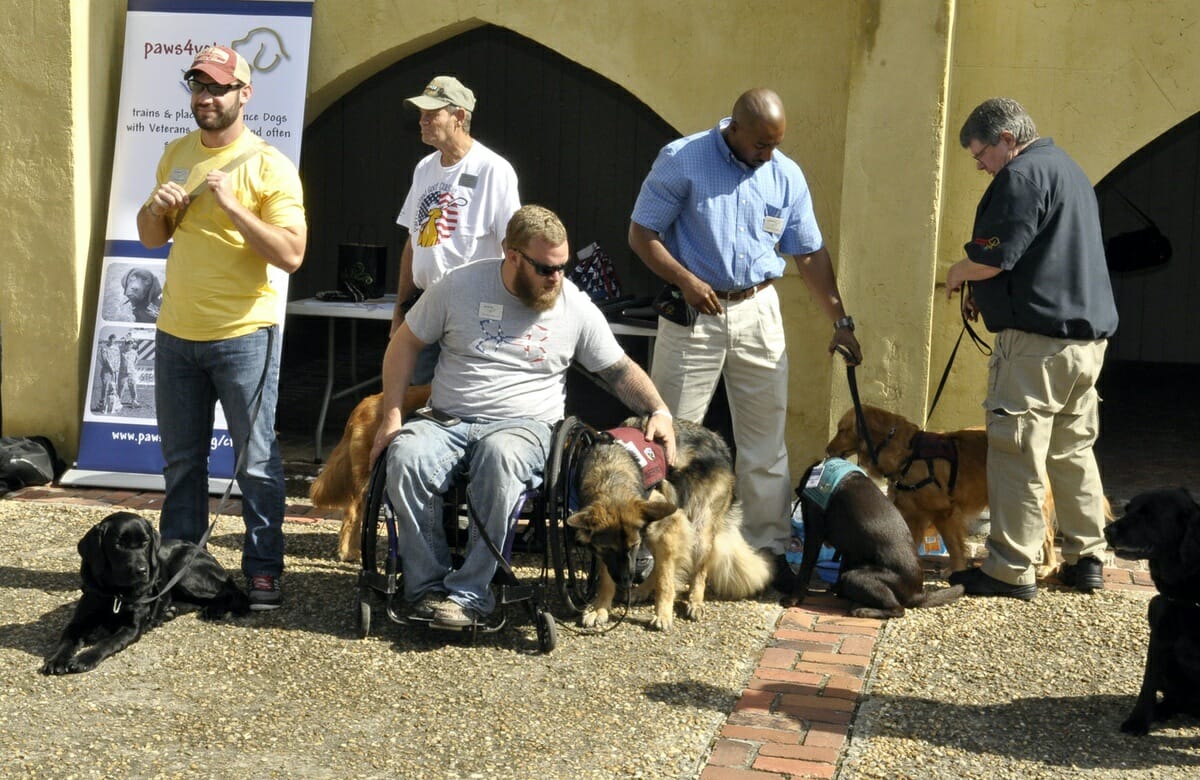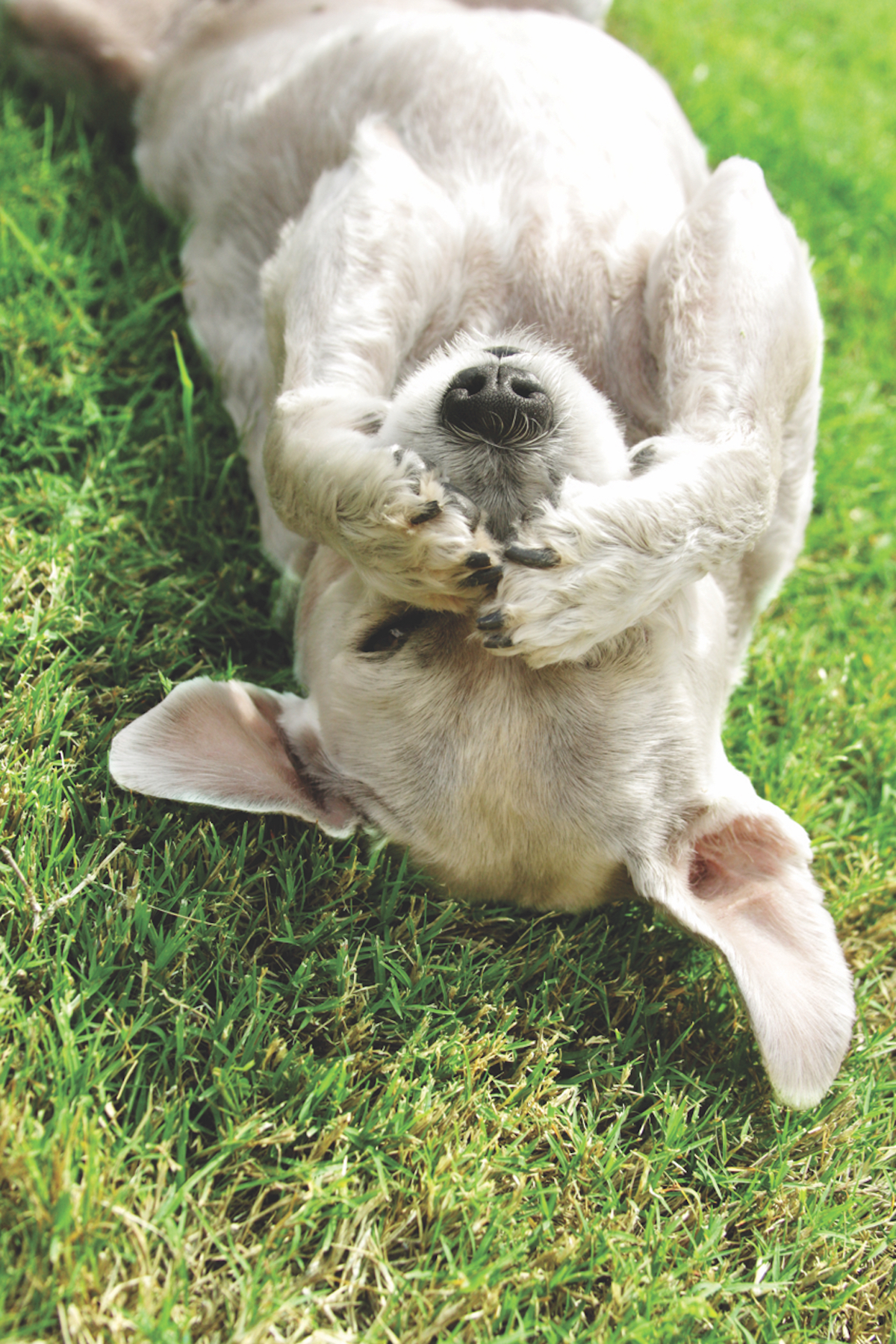By Dr. Parker T. Barker
You know that I am almost 10 years old and I have to admit I don’t jump up on the bed quite as easily as I used to. Or after taking a nap, it is hard for me to stand up. What is it? The same thing my Mom has, arthritis. Arthritis tends to be a bigger problem in bigger dogs but it can hit any of us pets no matter what size we are.
When you start to notice signs that things are changing for your dog, it is time for a trip to the Vet to make a plan about managing pain. No pet parent wants their four-legged furry one to hurt, so learn the steps you can take to make it better. I recommend a plan or time-line for treatment that doesn’t have any specific dates on it. Each pet will move through a treatment plan at their own pace. One dog might take another five years before serious medication is necessary. Another dog may need that medication right now. Here are nine things to keep in mind when you see your dog slowing down:
1. First on my plan is getting slim. Somebody called me “Porker” the other day instead of Parker and it really PO’d me. The less weight a dog carries, the less load there is for his joints to deal with. High quality food is important. There are now foods that are helpful in weight management and others that have ingredients already in them to help with joints. Read those labels carefully as you don’t want to sacrifice high quality foods for a catchy, cute label.
2. As much as possible, keep your dog warm and dry, since cold and damp conditions can aggravate arthritis. That’s why living where it is almost always warm is a good idea. Get your dog a soft, padded bed and for those with advanced arthritis, put some warm compresses on painful joints on the really bad days.
3. Find a professional dog massage therapist. Seriously. I would recommend the same thing for you if you had joint problems. Their work can increase your pet’s flexibility, circulation and sense of well-being. Your Vet might be able to recommend one.
4. Consider the use of pain medication for your pet. Typically nonsteroidal anti-inflammatory drugs (commonly called NSAIDs), may be considered or even disease-modifying osteoarthritis drugs (DMOADs) can take the pain away. Talk to your Vet before giving your dog any medication.
5. There are many studies about the effectiveness of glucosamine and chondroitin supplements for arthritis management. My feeling is that you won’t know if it helps until you try it for a decent amount of time. There really isn’t a downside if you use supplements from a reputable firm. Your vet can recommend some. Both of these supplements can be used to help improve joint mobility and support better joint functioning in dogs – and people too -but there are specific ones for dogs.
6. Now, to show my progressive side, did you know acupuncture isn’t just for people? This painless technique has shown some success for animals suffering from arthritis. Again, give it a shot of other methods don’t seem to be helping. And again, make sure you are going to a reputable acupuncturist.
7. For dogs with very advanced arthritis, surgery may be an option. But talk to your vet about the pro’s and con’s of this kind of surgical procedure. You need to know what you can expect after the surgery.
8. To make your pet’s life easier at home, consider adding steps to get up and down from your bed or sofa, or even a ramp if steps are hard. A ramp can also be hugely helpful for getting in and out of a car. There are also dog harnesses that have a handle on top to help get a dog up or down with less pain. Remember you really don’t want your dog to jump down from things as that produces a huge amount of jolt to their already painful bones and joints.
9. And lastly, exercise is a must, but you have to monitor it so that your dog’s exuberance doesn’t exacerbate his sore joints. Controlled exercise is what he needs. And he needs it every day. Remember, if you are exercising your dog, try and find a place that is easier on his joints like a jogging track or other softer surface to run and play on. Concrete is a very unforgiving surface for your dog’s joints.
So there you have it. Some of us will have to admit that our squirrel chasing days are numbered. Soon it will be too painful to make it fun anymore. I guess I’ll just bug my sister Peanut then. So much easier…
Dr. Parker T. Barker received his doctorate in Squirrel Chasing and Hoovering from the University of Hartford, CT Rescue Center.







